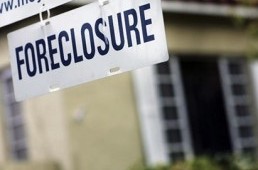
November 4, 2016 | by Michael Wilt
The "Understanding the Subprime Mortgage Crisis" paper from the Federal Reserve Bank of St. Louis described the housing crisis of the mid-2000s as a "rise and fall of the subprime mortgage market [that] follows a classic lending boom-bust scenario, in which unsustainable growth leads to the collapse of the market."
According to the National Center for Policy Analysis, as many as 10 million people lost their home to foreclosure during the housing crisis. Since then, many individuals who lost their homes have yet to return to homeownership. One of the reasons is that while the economy and housing market have rebounded, the credit profiles and borrowing history of these former homeowners have yet to recover.
A recent Urban Institute report offers insight on this group of individuals. The report evaluates the credit profiles of six groups of people broken down by their homeownership and rental history during the past 16 years.
Of particular interest is the group of renters who have had a mortgage in the past 16 years, but they don’t now. This group includes many of the individuals who lost their homes during the housing crisis.
Their average credit score of 665 is lower than every other group except renters with no mortgage history. And 28.4 percent of them have a negative record that is public like a bankruptcy, judgment, tax lien, or other outstanding federal/government agency debt like a defaulted student loan.
These factors make it difficult for this group of renters to qualify for a mortgage and may help explain why despite many efforts to bring the mortgage industry back to previous levels many individuals remain on the homeownership sidelines saddled by the aftermath of a crisis that ended years ago.
The report also includes these salient findings:
Sixty-four million or 52 percent of all renters have credit scores below 650, generally not high enough to qualify for most mortgage products.
At least 57 percent of individuals who experienced a foreclosure between 2003 and 2015 are not homeowners in 2015.
Of the 96 million renters who have never had a mortgage, 42 percent have debt in collections.
Texas Financial Toolbox
 As a reminder, TSAHC connects consumers with resources at www.texasfinancialtoolbox.com to help Texans improve their financial health, buy a home or avoid foreclosure. If you were impacted by the housing crisis and want to get back on the path to homeownership, you can find information on financial education and credit counseling to improve your financial health. Information on home buyer education courses and foreclosure prevention counseling is also available.
As a reminder, TSAHC connects consumers with resources at www.texasfinancialtoolbox.com to help Texans improve their financial health, buy a home or avoid foreclosure. If you were impacted by the housing crisis and want to get back on the path to homeownership, you can find information on financial education and credit counseling to improve your financial health. Information on home buyer education courses and foreclosure prevention counseling is also available.
On the House blog posts are meant to provide general information on various housing-related issues, research and programs. We are not liable for any errors or inaccuracies in the information provided by blog sources. Furthermore, this blog is not legal advice and should not be used as a substitute for legal advice from a licensed professional attorney.
TSAHC reviews all blog comments before they are posted to ensure a positive experience for our online community. Off-topic comments; hostile, derogatory or deliberately insulting comments; and comments specifically promoting goods and services will not be posted.
Approved comments will be published in their entirety. Personal information will not be removed unless it pertains to someone other than the person submitting the comment. For more information, please see our Comment Posting Guidelines.
To remove a previously submitted and published comment, please contact Anna Orendain at [email protected].
If you have a question regarding any of TSAHC's programs, please contact us.
